- Comics
- Comics Reviews
- Manga
- Comics Reviews
- European Comics
- News
- Comics News
- Press Releases
- Columns
- Spotlight
- Digital Comics
- Webcomics
- Cult Favorite
- Back Issues
- Webcomics
- Movies
- Toys
- Store
- More
- About
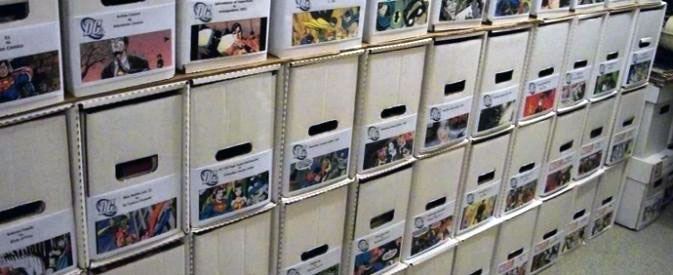
By Philip Schweier
July 17, 2015 - 09:22
There was a
recent article on Bloomberg.com featuring the headline, “Those
Comics Books in Your Basement? Probably Worthless.” It cites a number of
instances in which collectors had accumulated several hundred books over the
past 30-40 years, anticipating the day when they could cash them in for a
college education or a down-payment on a home. Sadly, such hopes are
unrealistic due to today’s comic book market, for several different reasons.
Much of the high-demand material of recent years has been
re-printed and re-packaged repeatedly. Most older material is too scarce for
average collectors to find. And despite what the Overstreet Price Guide
might claim, near mint copies of 1990’s X-Men #1 can be had online at
affordable prices.

I can’t speak for everyone, but I’m confident in saying that my experience in
the world of selling comics isn’t unique. In my teens, when I became a “serious
collector,” I faithfully bagged and boarded each issue, cataloguing its
condition and value, tracking its value year after year. But then real life got
in the way; jobs, final exams, college, girls and car repairs all took their
toll on the time I could devote to my hobby. Somewhere in there, the need for
cash prompted me to sell off part of my collection, and I went about it perhaps
in the most naive way imaginable.
I found an ad for a reputable comic book dealer, which promised a percentage of
price guide value. I naively interpreted that as a percentage over the price
guide value. I boxed up my comics for shipping, along with an invoice of
expected prices for each, and sent them off. A week or so later I received a
check in the mail for a fraction of my expected payment, with a note explaining
my miscalculation. I was given the option of cashing the check, or sending it
back, and they would ship my comics back to me at my expense. Since the
combined cost of shipping there and back exceeded the amount of the check, I
chose to take the money. And the education.
Lesson 1: Dealers
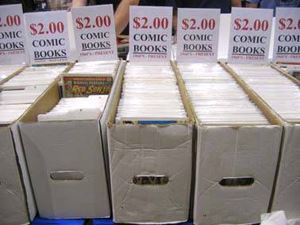
Any time you approach a dealer to sell your comic books, you automatically give
them the advantage. It’s very likely your need for their money outweighs their
need for your comics.
This means they will offer you the lowest price imaginable, whether it’s a flat
amount for the collection, or a price per box. They will not take the time to
price each individual comic book, not unless you have some truly outstanding
items in your collection.
Dealers are not collectors, so they generally aren’t concerned with first
issues, first appearances, who wrote it, or who drew it. Their criteria for
choosing what they buy is based on re-sale value. “How much of a profit can I
make in re-selling, and how quickly?”
Lesson 2: Price Guides
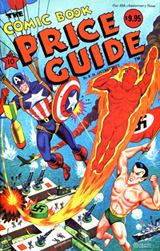
You can buy a book that will tell you what your comics are worth, but let’s ask
ourselves, “Where do those figures come from?” A nameless group of dealers,
retailers, collectors and other “experts” make that determination. It’s based
on a sampling of prices paid over a given period, coupled with statistical
analysis. It’s all very mathematical and perhaps woefully unrealistic.
Adding to its illegitimacy is the idea that the publishers of most price guides
are not in the business of buying and selling comics. They sell price guides,
and the advertising inside.
Online comic book dealers can sometimes shed light on a book’s values, but if
you want to assign a dollar amount to your comic books, visit ebay. See what
other collectors are paying on a daily basis for the very same book.
Lesson 3: Why aren’t my comic books valuable?
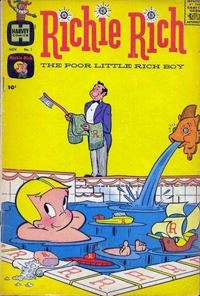
Once upon a time, comic books were disposable. They were intended to be read,
traded, read again, and traded again. Repeat, ad infinitum. When bedrooms and
basements were cleaned out, comic books were disposed of, along with
miscellaneous toys, clothing and other books. As a result, many of the oldest
comics have failed to survive more than 10 years after publication.
But then they became collector’s items, to be bagged, boarded, boxed and
preserved. Used bookstores began stocking older comics, selling back issues at
inflated prices. Comic book shops came into being, and a secondary market
evolved. Publishers wanted a piece of this pie, so they republished the most
popular, hard-to-find books. Rather than scour comic book stores and convention
dealers for individual issues, fans could buy them all in one combined volume for
less money. With this material so readily available, the re-sale value of the
original comics began dropping.
Then the digital age happened. Online platforms made accessibility as easy as
clicking a mouse, without the added expense of printing, binding and
distributing. Comics became ethereal electronic documents on a phone or tablet.
Suddenly that man-cave of memorabilia gave way to home offices and babies’
rooms.
Lesson 4: What do I do with my comics now?
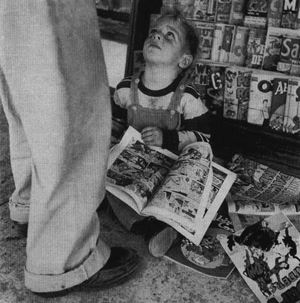
As I said before, comic books were intended to be read, traded, read again, and
traded again. Read them, just as you did when you were a kid, the cover folded
back, draped over the arm of a chair when you go to the kitchen for a refill on
the root beer. If a little bit of condensation drips, so be it. It’s all good.
They still retain a value, but not the kind that will finance a major purchase.
Instead, they become part of what makes you the “cool uncle,” when you share
them with a niece or nephew visiting for the weekend.
If you still have hopes of selling your collection, that will require another
investment – time. Spend some time online, on various message boards and
Facebook pages where collectors congregate. Suss out the collector’s market and
proceed with caution as you make it known your collection is available.
Who knows? You just might find a collector with deep pockets willing to store
your collection, and pay you for the privilege. As long as you have the
electronic versions on a phone or tablet, you’ll be able to read them whenever
you like.
This is by no means a complete and comprehensive overview of the merits of
comic book collecting. We'll cover more in our next installment. Stay tuned.